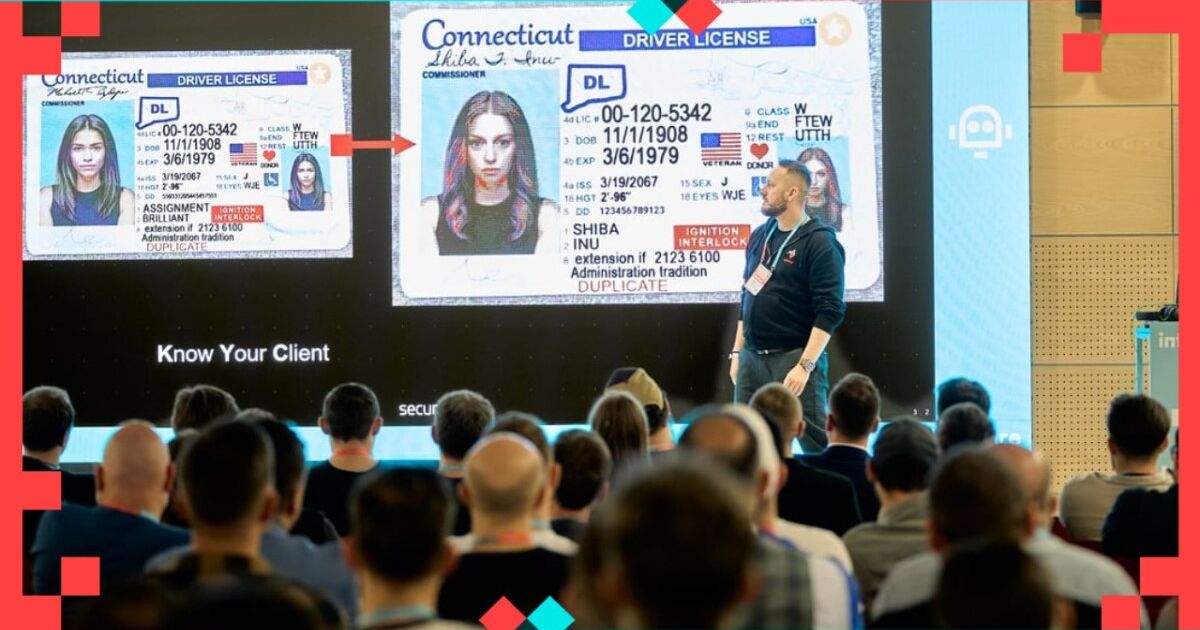VIEW SPEECH SUMMARY
- Kluczowym składnikiem zespołu jest odpowiedni pracownik, a jego motywacja zależy od etapu rozwoju osobistego („Highway to Hell”):
- Have – przetrwanie, gotowość do kompromisów;
- Expand – posiadanie, stabilizacja, uczciwa praca;
- Live Limitless – realizacja marzeń, poszukiwanie pracy zgodnej z kompetencjami;
- Limitless – osoby korzystające z osiągnięć innych, wysokie oczekiwania personalne.
- Zrozumienie etapu motywacji pozwala na dostosowanie narzędzi motywacyjnych i zwiększenie efektywności pracy.
Rola menedżera w zespole
- Menedżer musi być wielowymiarowy, nie tylko techniczny, ale przede wszystkim „people leaderem” – liderem ludzi.
- Menedżer powinien określić balans między micromanagementem a undermanagementem, dostosowując styl zarządzania do doświadczenia pracowników.
- Dobra komunikacja na szerokim kontekście, dająca zespołowi pełen obraz celu i wpływu ich pracy, jest konieczna.
Budowanie tożsamości i integracji zespołu
- Tworzenie tożsamości zespołu poprzez:
- Ustandaryzowany onboarding,
- Nadanie nazwy, logotypu zespołowi, materiały identyfikacyjne (np. koszulki),
- Budowanie poczucia przynależności już od pierwszego dnia pracy.
- Wzmacnianie ducha zespołu poprzez wzajemne nauczanie i dzielenie się kompetencjami pomiędzy doświadczonymi a młodszymi pracownikami.
Program Bootcamp jako sposób na szybkie rozbudowanie zespołu
- Bootcamp trwał 3 miesiące, z czego 2 miesiące poświęcone na praktyczne zadania, a 1 miesiąc na wdrożenie metodyki Scrum Agile.
- Program kosztował firmę, ale zwracał się w 6–9 miesięcy dzięki zwiększeniu efektywności zespołu.
- Umożliwiał odciążenie seniorów i rozwój kompetencji juniorów.
Przykłady i case study pracowników
- Pracownik niedostosowujący się do oczekiwań, mimo planu poprawy, został ostatecznie zwolniony.
- Pracownik nieobecny bez kontaktu miał problemy osobiste, jednak po wsparciu i przepracowaniu sytuacji otrzymał drugą szansę i dobrze się rozwinął.
- Młody pracownik z potencjałem biznesowym po kilku miesiącach awansował na lidera projektu, rozwijając zarówno umiejętności techniczne, jak i biznesowe.
- Pozytywne podejście do odejścia pracownika – wspieranie decyzji i utrzymywanie dobrych relacji, co sprzyja retencji i powrotom do zespołu.
Podsumowanie i rekomendacje
- Osobowość jest ważniejsza niż umiejętności techniczne; te ostatnie można wykształcić.
- Ważne jest dostosowywanie motywacji i zadań do etapu rozwoju pracownika.
- Menedżer powinien działać jako lider ludzi i a1._adam_tornhill_1080.txt
AI and Deepfake Demonstrations
- Deepfake examples:
- AI-generated realistic photos of people (e.g., a young blonde girl drinking coffee with accurate photographic detail).
- Face swap between presenter and Brad Pitt using free, easy tools.
- Use of deepfake videos for phishing attacks (fake Facebook login pages capturing credentials).
- Live deepfake and voice alteration demos using AI models and popular apps (e.g., face-swapping with Arnold Schwarzenegger’s face).
- Highlights risks of identity manipulation and impersonation in virtual meetings or social networks.
Phishing and Social Engineering with AI
- Criminals use AI to fake IDs and bypass "Know Your Customer" biometrics.
- Examples of scams where fake impersonation caused large financial losses.
- Demonstrates "browser-in-browser" phishing where credentials are stolen silently.
- Shows how AI can convert static images to videos, enhancing deception.
Technical Aspects and LLM Attacks
- Discussion on OWASP Top 10 attacks relevant to Large Language Models (LLMs):
- Password generation based on OSINT profiles for brute-force attacks.
- Ransomware code generation from simple prompts.
- Techniques to bypass AI ethical filters (jailbreaking, prompt injections, "13 and a half prompt").
- Prompt puppetry — manipulating AI to act in specific harmful roles (e.g., drug manufacturing steps).
- Denial of service to AI by exploiting buffer overflow via infinite prompts.
- Training data poisoning and supply chain attacks on AI models.
- Server-side template injection attacks in AI-powered web apps, allowing unauthorized code execution.
- Over-reliance on AI models can lead to security lapses.
- Evil twin attack demonstrated on Ollama LLM server leaking sensitive system files.
Defensive Measures and Security Recommendations
- AI applications require traditional web app security best practices (input validation, CSP, server-side protections).
- Awareness that AI cannot autonomously discern malicious intent.
- Use of prompt injection defenses to safeguard language models.
- Continuous security audits on AI integration and API access.
- Limiting sensitive data exposure through secure application design.
Future Threats and Emerging Trends
- AI as a tool amplifying cyber threats and attackers' capabilities.
- AI models could autonomously transfer data to command and control (C2) servers.
- Rapid evolution of attacks and countermeasures in AI security landscape.
Quiz and Engagement
- Quiz questions covered:
- Meaning of LLM (Large Language Model).
- Definition of jailbreaking in AI context.
- Explanation of deepfake technology.
- Participation included ~80–90 respondents; winners awarded cybersecurity book and T-shirts.
- Presentation slides available via secure QR code.
---
Actionable Items and Tasks:
- Add presenter on LinkedIn or contact via provided email for questions.
- Participate in the quiz to win cybersecurity resources.
- Educate teams about AI-driven phishing and deepfake threats.
- Implement traditional web application security protocols when deploying AI solutions.
- Monitor AI application APIs and check for common vulnerabilities (e.g., injection attacks, buffer overflow).
- Stay informed on emerging AI attack techniques like prompt puppetry and jailbreaking.
- Consider using prompt injection defenses in AI model deployments.
- Raise awareness about the risks of voice and face spoofing in communications.
- Prepare organizations for future threats involving autonomous AI-powered cyberattacks.
---
Key Points:
- AI technologies can create highly convincing fakes enabling sophisticated cybercrime.
- LLMs are vulnerable to multiple novel attack vectors requiring vigilance.
- Ethical filters in AI can be bypassed, raising risks of malicious code generation.
- Security best practices remain essential for AI system implementations.
- Human oversight and education are crucial in mitigating AI-related cyber threats.dbać o komunikację oraz integrację zespołu.
- Współpraca i wzajemne wsparcie w zespole są kluczowe dla sukcesu.
- Należy słuchać, obserwować i wspierać pracowników, korygować błędy poprzez instrukcje i motywację, nie ignorować problemów indywidualnych.
- Budowanie zespołu od zera to proces, który wymaga inwestycji w osoby i ciągłej pracy nad kulturą organizacyjną.
---
Zadania do wykonania / działania:
- Zidentyfikować motywację poszczególnych członków zespołu według modelu „Highway to Hell”.
- Dostosować styl zarządzania do poziomu doświadczenia pracowników – balans między micromanagementem a undermanagementem.
- Wdrożyć ustandaryzowany proces onboardingu z elementami identyfikacji zespołowej.
- Rozważyć implementację programu bootcampowego dla szybkiego wprowadzenia i rozwoju juniorów.
- Regularnie monitorować i wspierać pracowników, także w sytuacjach trudnych, oferując konstruktywną informację zwrotną.
- Utrzymywać otwartą komunikację przy odejściach pracowników i budować trwałe relacje.
AI-Powered Hacking: Live Deepfakes, Remote Access, and the Future of Cyber Threats
14:40 - 15:10, 27th of May (Tuesday) 2025 / DEV AI & DATA STAGE
Artificial Intelligence is no longer just a defense tool — it's now a weapon in the hands of cybercriminals. In this live and technically grounded session, we’ll demonstrate how modern attackers leverage AI to craft convincing deepfakes in real time, manipulate human trust, and execute remote code without ever touching a keyboard. You’ll witness the rise of AI-assisted exploitation techniques, including prompt injections and intelligent automation of attack chains. We’ll explore real-world scenarios and showcase tools that blur the line between social engineering and technical compromise. Whether you're a red teamer, defender, or just curious about where cybersecurity is heading — this talk will leave you questioning what’s real, what’s AI, and what’s next.



